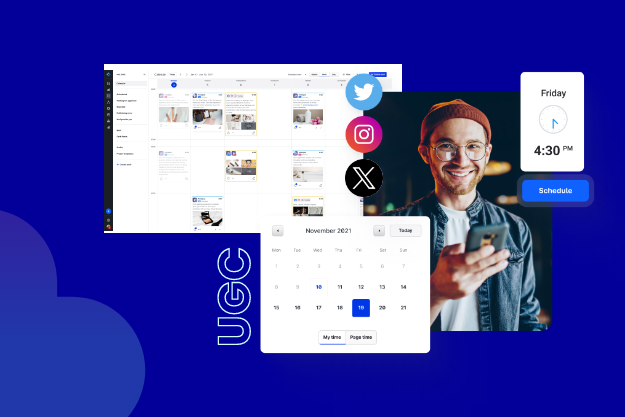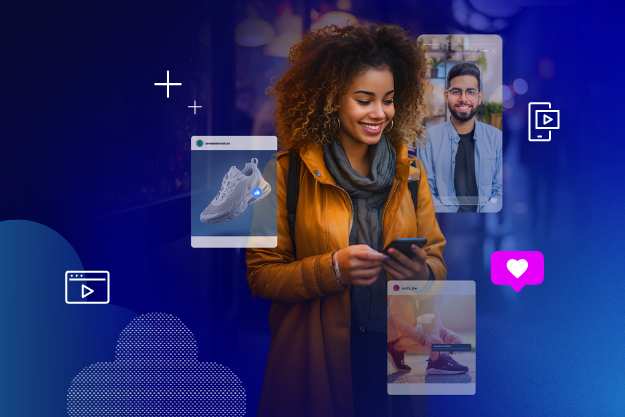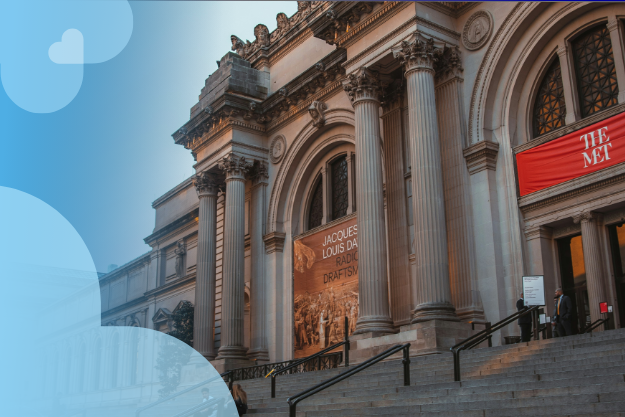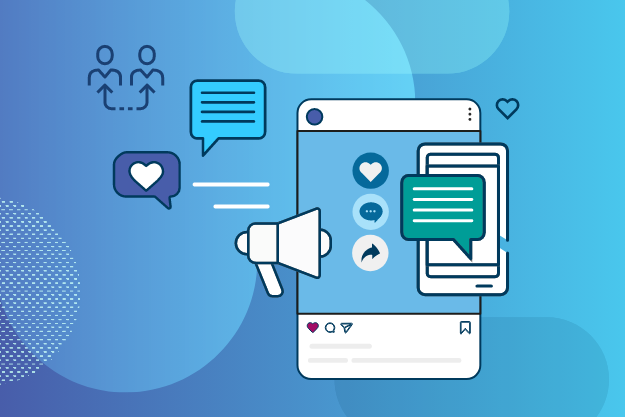It’s no longer good enough for a brand to just be itself in digital marketing. Consumers want your customers to do that for you.
Authenticity is the key for modern brands to be successful in engaging modern consumers. According to an Emplifi survey conducted in collaboration with Harris Interactive, 54% of modern consumers said they always or regularly research online pictures or videos of real people prior to purchasing an item. That means your customers crave authentic, user-generated content (UGC), and to give it to them, your brand needs a UGC platform.
In this article, we’ll explore the role and benefits of a UGC platform for brands, and how this could be the missing piece for your eCommerce ecosystem.
What is a UGC platform?
In many ways, every social media channel is a UGC platform, but what we mean specifically is a platform that allows brands to collect, manage, and publish UGC across social and digital marketing channels.
Social platforms like Instagram, TikTok, and X are flooded with UGC, and that’s where a UGC platform helps connect content with organic brand channels and social commerce. These platforms source UGC from across a variety of sources, simplify the process of organizing content, streamline any necessary content permissions, and then help brands publish it across touch points on the buyer’s journey.
For brands and businesses, UGC platforms offer a unique opportunity to tap into the authentic voices of their customers, integrating these genuine narratives into their marketing strategies. This approach not only enhances brand credibility and trust but also significantly boosts engagement and conversion rates.
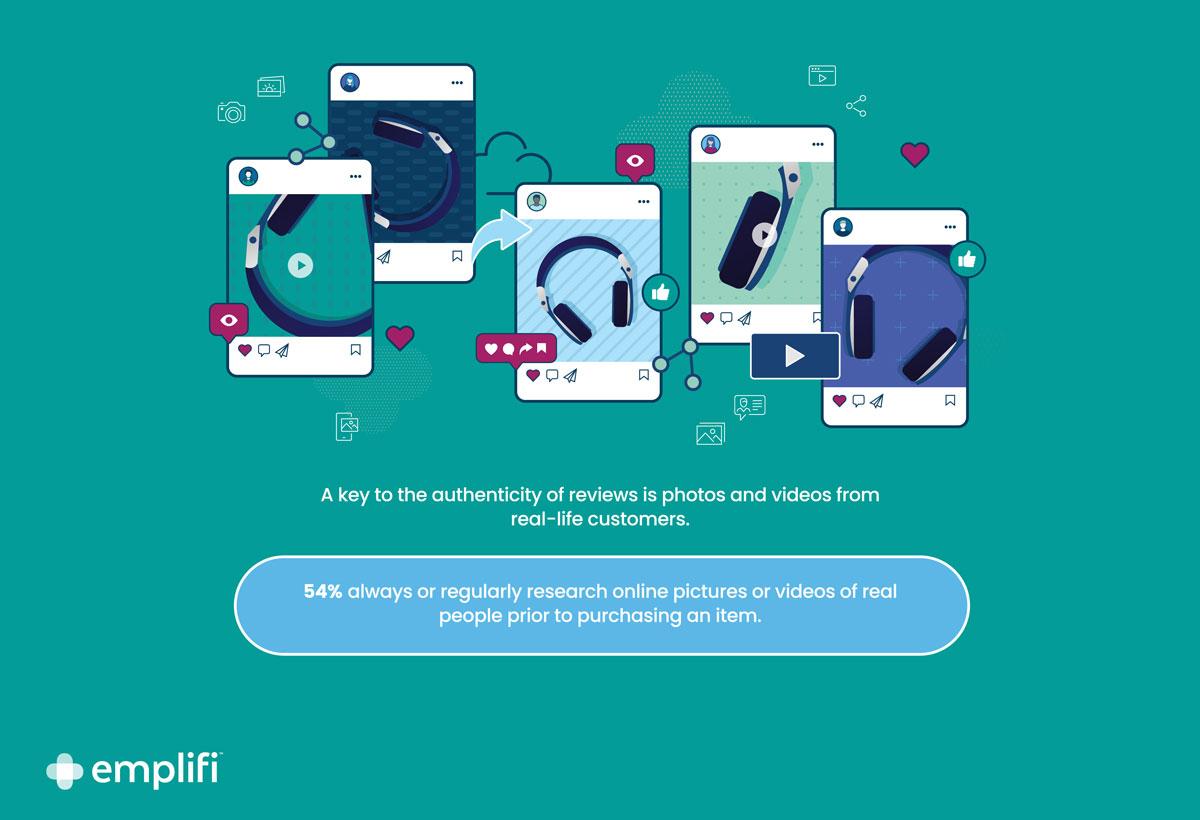
How do UGC platforms work?
Every day, people are sharing their own individual stories, pictures, and videos of their lives and, on occasion, interactions with a product across any number of digital channels. And the sharing of those interactions can have a powerful impact on a brand’s bottom line.
Just look at hashtags like #TikTokMadeMeBuyIt. Billions of people share UGC about products they love, including one campaign for L’Oréal that led to 4.5 million clicks and the highest-volume sell-out in the history of the beauty brand.
Shoppers tend to trust content created by their peers more than traditional advertising, making UGC a powerful tool for brands to amplify their message, gather valuable insights, and build a loyal community. To achieve this, UGC platforms can serve various functions, including marketing, customer service, and product development, by providing a direct channel for customer feedback and engagement.
Similar to a social media management platform, UGC platforms help brands collect user-generated content through social listening, organize the publishing experience for your digital marketing team, and track performance and analytics. Here’s how these platforms support your social marketing and eCommerce efforts.
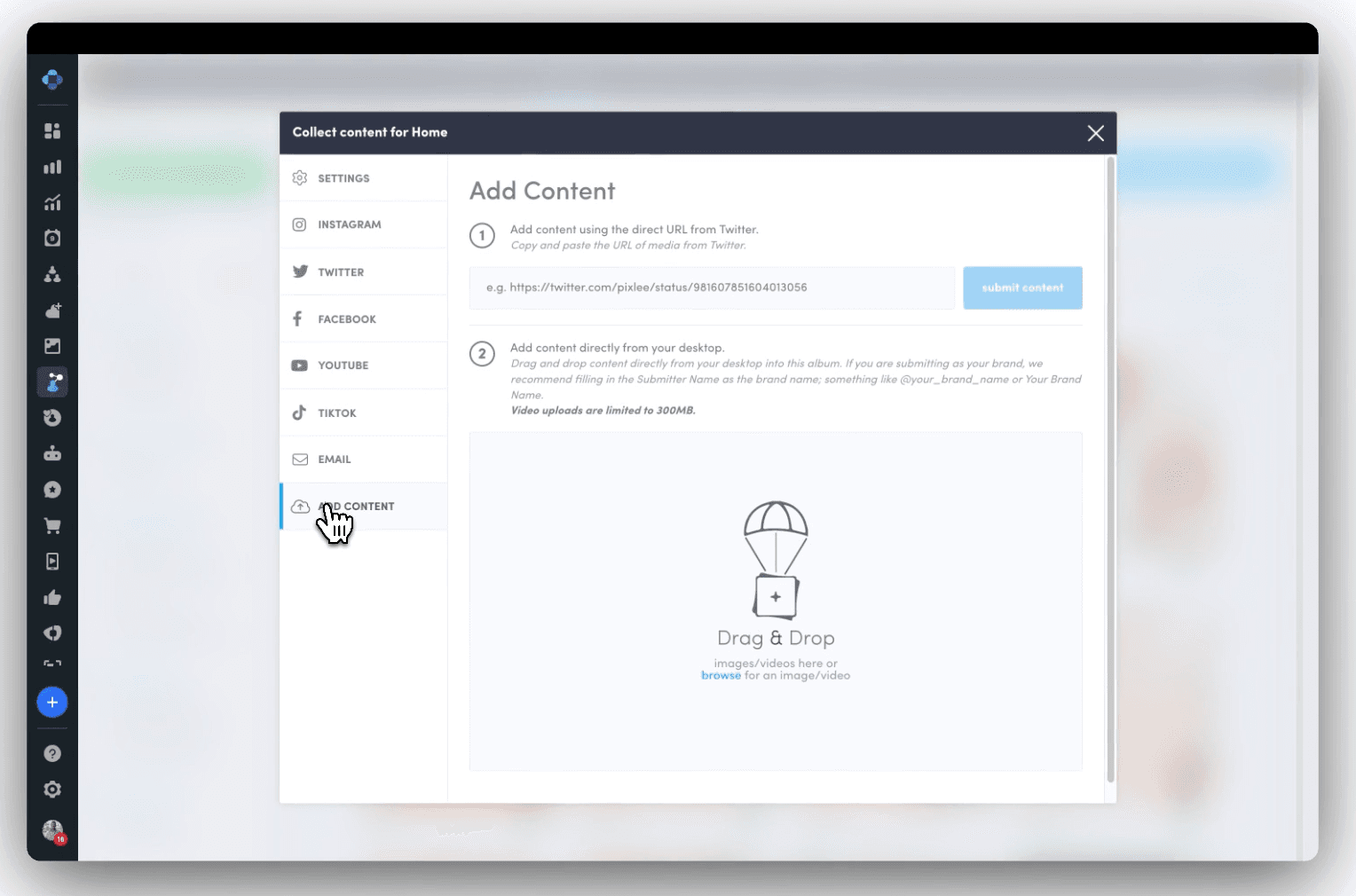
Image: Example of Emplifi UGC content collection sources
Collection and curation of UGC
These platforms – based on your search parameters – collect UGC from your social communities, and then organize libraries for review. This can include content types like social media images and videos, which could range from testimonials, product reviews, or simply your product in use out in the real world. When possible, these platforms can utilize AI or automation to speed the process to help recognize brand-safe content faster than your internal teams.
Content permission at scale
Once you’ve targeted the UGC your brand wants to feature, it’s time for the most important step: Ask for permission. Certainly, this can be done on a one-to-one level with digital marketing team members reaching out to the UGC owner. Platforms alleviate this step through automation and help speed the selection, approval, and publishing process for both creator and brand.
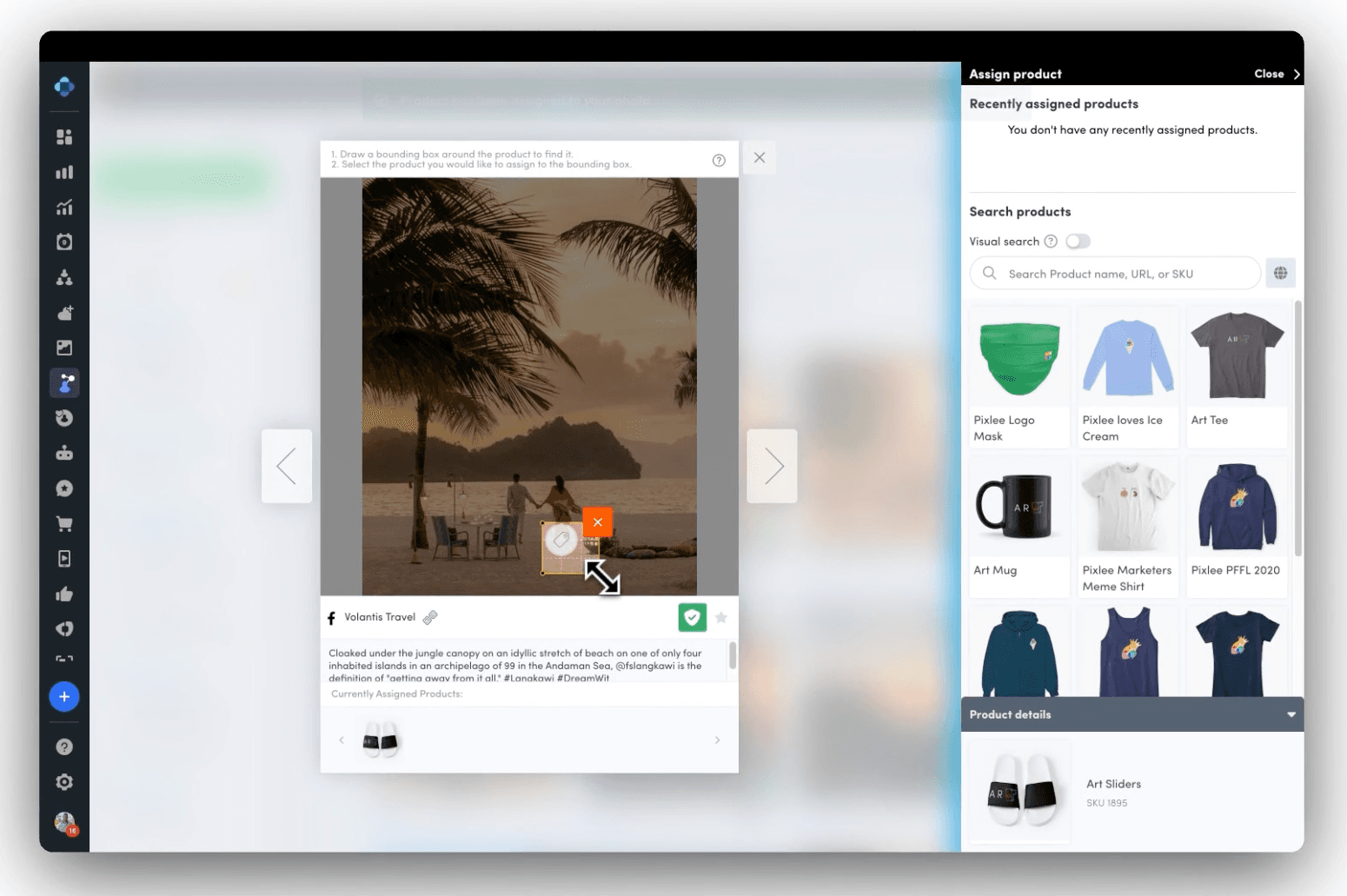
Image: Example of Emplifi UGC product tagging
Publishing across eCommerce channels
Resharing follower content or brand mentions on social media is only a small step in how UGC can deliver social proof across your brand’s entire customer journey. UGC platforms can allow your brand to publish community content directly to other digital channels, helping increase its impact and your brand’s authenticity at each touchpoint. A social media contest with your followers can quickly connect to product landing pages with the right tool, and product UGC can facilitate discovery, considerations, and conversion with product tagging made available through these platforms.
Measure and boost high-performing UGC
With connected channels and publishing comes the ability to measure what works and maximize its reach. UGC platforms help marketers understand ROI across channels, content types, and even creators, meaning top-performing content from your happy customers can quickly reach new audiences in new channels as you measure its impact.
How does a UGC platform collect and promote UGC?
UGC can be sourced from groups like employees, influencers, or your most enthusiastic customers. And just because it comes from social media, it doesn’t mean that’s the only channel where it can have an impact. For example, Radio Flyer extended the reach of its UGC and saw a 7x increase in conversions across content shared on social, product pages, and email campaigns.
Here are places where a UGC platform can help collect and then share across your eCommerce channels.
Social media
Naturally, UGC platforms are able to collect and reshare customer content across brand social channels. A common and highly effective source for collecting UGC is to hold a contest and use your UGC platform as a way to collect entries that celebrate your community or promote new product launches. The Cosmopolitan of Las Vegas utilized this tactic with its #DecadeOfMischief campaign to encourage customers to share memories via an on-site direct uploader.
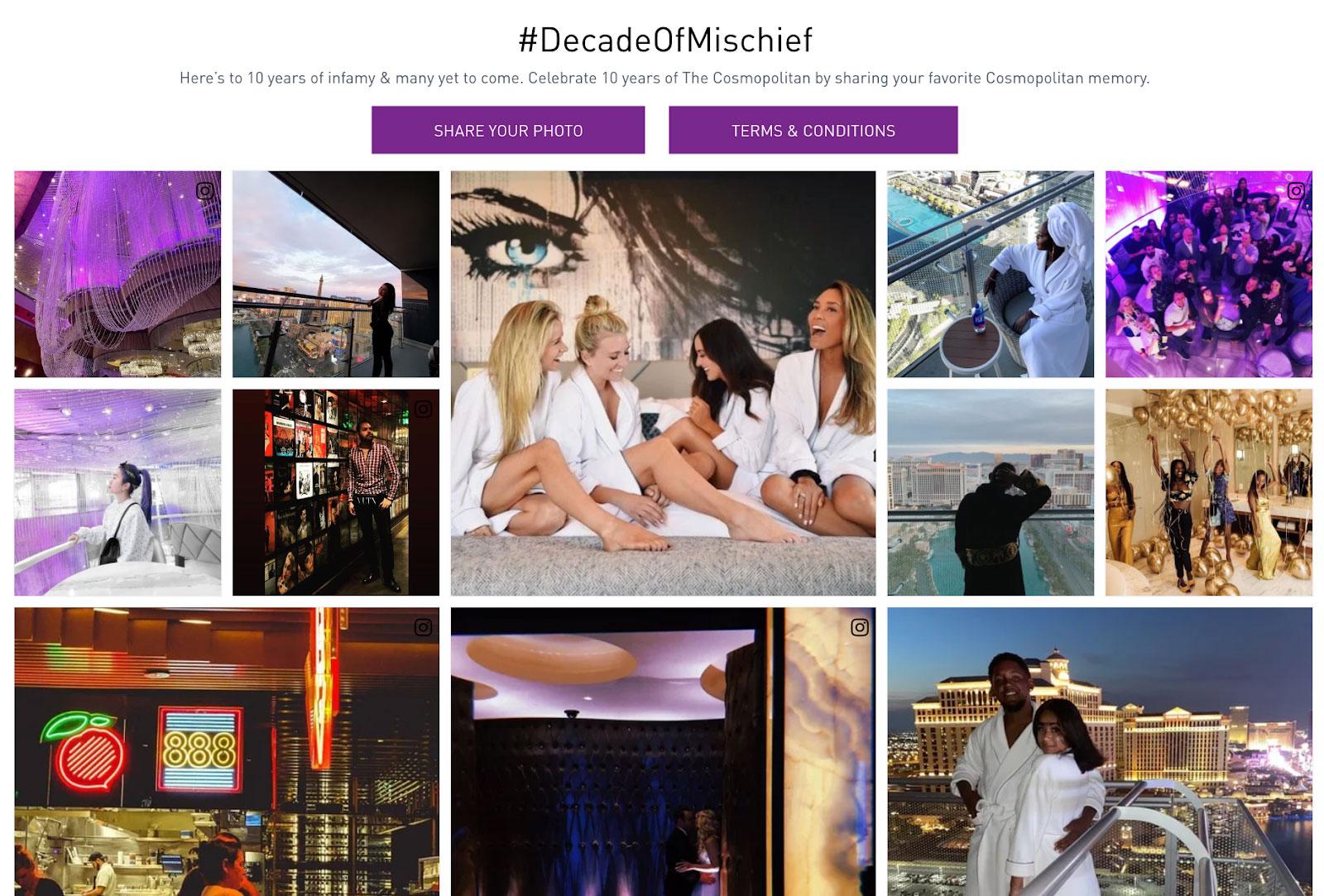
This collection method is an advantage of a UGC platform versus wading through brand hashtags and follower posts from traditional social media management tools. And once your brand has this library of content, shoppable features can then be added for its return trip to channels like Instagram, TikTok, and Facebook. Product tagging allows specific links and calls to action so that if a shopper stumbles across your UGC, they’ll have a direct link to purchase from each social post or hub.
Website galleries and product pages
UGC has yielded significant results when used on a brand’s owned media and eCommerce websites through galleries or customer content prominently featured around key purchase decisions. For example, Jones Soda Co. saw a 55% increase in time spent on site and a 48% increase in average order value (AOV) after a clever augmented reality campaign to collect and curate content from its passionate fans.
The impact of UGC on brand websites is simple: Authenticity. By including your community across specific eCommerce digital pages, shoppers can quickly see how your current customers enjoy, benefit, or, like Wool and the Gang, take inspiration from your products.
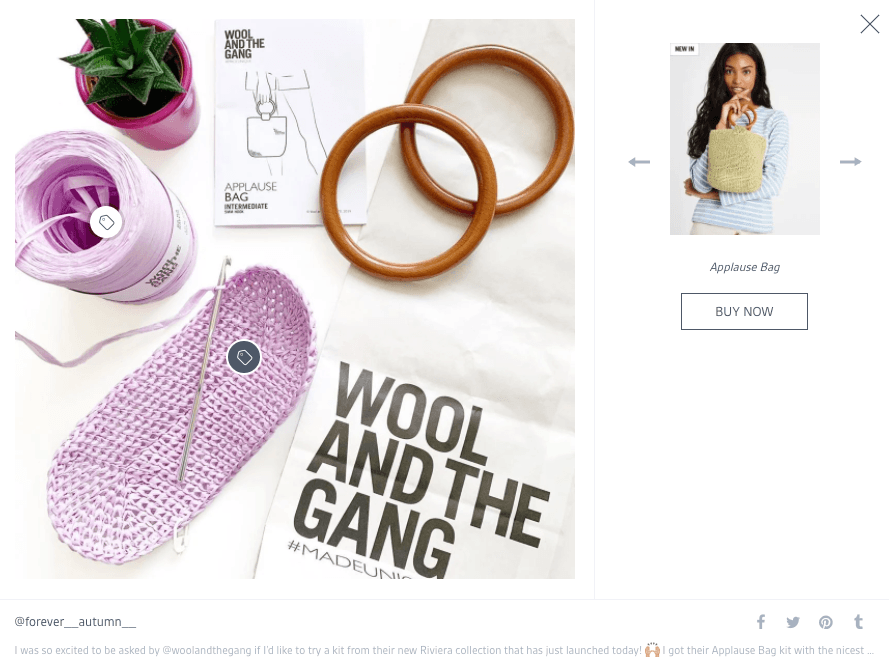
Email marketing
UGC has a natural place within email visuals, as it gives brands a way to showcase products for specific customer touch points like welcome emails, newsletters, cart abandonment, post-purchase reviews, back-in-stock products, testimonials, new products, or retargeting emails. Similar to website galleries, these moments offer a way to deliver authenticity at just the right moment to help inform or inspire a customer.
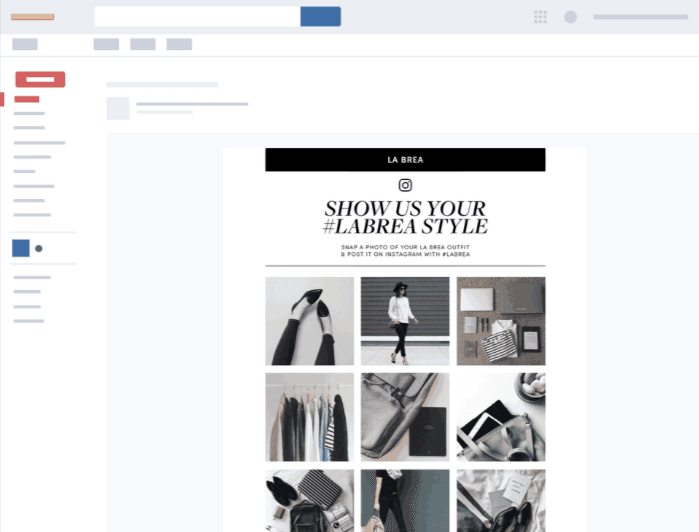
Digital and live displays
You have the ability to merge the physical and digital customer experiences by sharing UGC across digital or live displays. If your brand has a robust network of screens across its retail footprint, customer content can be shared from a UGC platform to in-store galleries, trade shows, events, and in-stadium screens. This can be curated or done in real-time to inspire customers as they shop.
What are the benefits of a UGC Platform?
By harnessing the power of community-driven content, UGC platforms enable a more authentic and diverse exchange of ideas and experiences, fostering a sense of ownership and community among users. Here are ways that a UGC platform can directly impact your brand.
Enhanced content strategy
Diversifying your content strategy with UGC adds a layer of relatability and freshness that branded content sometimes lacks. A UGC platform enables brands to seamlessly incorporate this customer content into their marketing mix, ensuring a steady stream of fresh and engaging content that speaks directly to the target audience's interests and needs.
Social proof is a powerful influencer in the buying process. UGC acts as a form of social proof, showcasing real users with your product and providing tangible evidence of its value. This strengthens brand credibility and can significantly influence purchasing decisions.
Increased authenticity across eCommerce channels
By showcasing content created by your community, UGC platforms can dramatically increase engagement by deploying social proof.
Prospective customers see real-life applications of products or services, making the buying decision easier and more relatable. UGC platforms optimize this process, ensuring that the most impactful content reaches the right audience at the right time.
Cost savings for content production
Leveraging UGC allows brands to utilize content that their community creates, significantly reducing the cost and resources typically required for content production. This cost-effective strategy not only saves money but also enriches the brand’s content with a variety of perspectives and voices.
UGC platforms amplify this impact through efficiencies in the collection and sharing of this content. An effective UGC platform should offer ease of content curation, robust analytics, comprehensive permissions management, and seamless eCommerce integration.
Easier collaboration between your teams
Social media and eCommerce teams both benefit from integrated tools like UGC platforms, particularly those that integrate with your current social media management suite.
Brands can collect and share to all required brand or commerce channels within one system, versus having to download in one platform and upload and tag in another. By increasing content velocity, all of your internal teams benefit, and the process of collection and redistribution moves much quicker among teams thanks to a UGC platform.
What to look for in a UGC platform
As you evaluate options for your own UGC platform, here are some things to consider as you decide what works best for you to collect, curate, publish, and measure authentic content for your brand:
Flexible collection: Collect UGC (including videos) from your customers via various social media channels like Instagram, TikTok, and Pinterest.
Customizable widgets: Set widgets that match your brand’s style live on your website, and give visitors the option to filter UGC by product-specific parameters.
Content scheduling: Schedule UGC to post on your brand’s social profiles according to your content calendar, and update live widgets on your website instantly.
Campaign management: Create, launch, and track specific campaigns with branded hashtags to encourage more UGC collection.
One-step permissioning: Automatically ask for and collect permissioned content with one click.
Analytics: Track which pieces of content and which users show the highest ROI, and map changes in metrics like conversion directly to specific pieces of UGC.
The takeaway
Implementing a UGC platform is not just a trend. It's a strategic move toward more authentic, engaging, and cost-effective marketing. Staying competitive means staying connected to your audience, and UGC is a powerful way to achieve that. Consider how a UGC platform like Emplifi’s can transform your brand’s engagement and conversion. If you’d like to learn more, consider a demo today.













